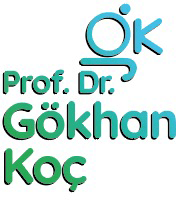
Circumcision Procedure
Circumcision: A Medical Overview
Circumcision can be described as the removal of the foreskin, which covers the penis and has the potential to accumulate debris and secretions, leading to infections if not cleaned regularly.
Though circumcision may seem like a simple procedure, it is important to remember that it is a serious operation. Therefore, it should always be performed by a urology specialist who has been properly trained in the procedure.
Incorrect circumcision can cause significant problems in the future. It is most commonly performed at a young age, mainly because children heal faster.
As a major procedure, circumcision can be done using different techniques. Some of these include:
- Dorsal slit
- Gomco method
- Guillotine method
- Plastibell method
- Double incision technique
The specific method used depends on the situation, and healing is generally fast.
How is Circumcision Performed?
Treatment Details
- Operation: Circumcision Procedure
- Procedure: Removal of excess skin from the penis
- Duration: 30 minutes
- Hospital Stay: Discharged the same day
- Anesthesia: Local or Sedation (light anesthesia)
- Recovery Time: 2-3 days
- Return to Work/School: 3-4 days
- Scarring: No
- Pain Duration: 24 hours
Before beginning the surgical procedure, regional anesthesia is applied to numb the penis. Then, the area is sterilized, and the appropriate cutting points are marked. Using surgical tools such as a scalpel or scissors, the marked portion of the penis is removed. The remaining tissue is typically stitched with dissolvable stitches to control bleeding.
Post-surgery, bandages are usually not required. The patient can shower 48 hours later. Pain relief medication can be taken during the first few days, based on the doctor’s advice and patient preferences.
A mild swelling may occur at the tip of the penis, which should subside within 2 to 3 weeks.
While circumcision may appear to be a low-risk procedure, it is a serious surgical operation and should be performed by a specialist. Though rare, some patients may require further intervention due to bleeding after the procedure.
Ideal Age for Circumcision
There are various discussions regarding the best age for circumcision, but there is no clear consensus. The method of anesthesia should be adjusted according to the child's age.
Local anesthesia is typically used, though some children may feel distressed due to fear, which could complicate the procedure. In high-risk cases, sedation (mild sleep) is recommended to ensure the procedure is carried out smoothly.
What You Should Know About Circumcision
Circumcision is the medical procedure in which the foreskin around the head of the penis is removed. It is a serious medical procedure that should be performed by a qualified doctor. It is also often performed for religious reasons, particularly in Muslim and Jewish communities. Sometimes, circumcision is done for medical reasons when the foreskin causes infections or other issues.
The procedure must be done under hygienic conditions, and improper conditions could lead to serious problems. In some cultures, circumcision may also be performed on females, although this is less common and has no scientific backing for necessity.
Throughout human history, circumcision has been practiced, and its application has been increasing in recent decades, as there is evidence it can help prevent penile cancer. Male circumcision generally involves the surgical removal of the foreskin before puberty. Studies suggest that removing the foreskin reduces the likelihood of infection in the penile tissue.
There is no definitive scientific data on the best age for circumcision. The type of anesthesia should be selected based on the child’s age and medical condition. However, children who may experience significant psychological trauma from the procedure should receive sedation.
Parents should always consult a pediatrician and a urologist before making any decisions about circumcision.
Recovery Process After Circumcision
The recovery process typically takes one to two weeks. During this time, the individual should avoid strenuous activities as they may experience pain or swelling. Keeping the area clean and dry, along with taking pain relief medication, may be necessary.
To promote proper healing, patients will be advised to refrain from masturbation, sexual activity, and contact sports until the area has healed. A follow-up visit with the doctor is recommended 7 to 10 days after surgery.
Circumcision Prices in Izmir
Circumcision is the surgical removal of the foreskin to expose the tip of the penis. Although it may appear to be a simple procedure, circumcision is a significant operation that requires professional expertise.
Therefore, circumcision should always be performed by a urology specialist who has received proper training. Improper circumcision can lead to serious problems later on.
It is often performed on young children because they heal more quickly.
For information on circumcision prices in Izmir, it is advisable to consult experienced doctors in the field.
Frequently Asked Questions
Why is Circumcision Necessary? Circumcision is an important procedure, especially for children. It has numerous benefits, including significantly reducing the risk of penile cancer and reducing the likelihood of a partner developing cervical cancer. It also plays a critical role in preventing urinary tract infections.
What is the Ideal Age for Circumcision? Circumcision can be performed at any age, but it is recommended to do so before the age of four. Performing circumcision between infancy and age four is considered optimal for a child.
Does Circumcision Reduce Sexual Pleasure? Many people believe that circumcision affects sexual pleasure. However, studies have shown that there is no difference in sensitivity between circumcised and uncircumcised penises. Furthermore, the removal of the foreskin has no significant negative impact on sexual pleasure.
Source References
- Mayo Clinic: Circumcision Information
- Şencan, A., ÇAYIRLI, H., & Şencan, A. (2015). Sünnet Teknikleri. Celal Bayar Üniversitesi Sağlık Bilimleri Enstitüsü Dergisi, 2(4), 86-90.

Social Media